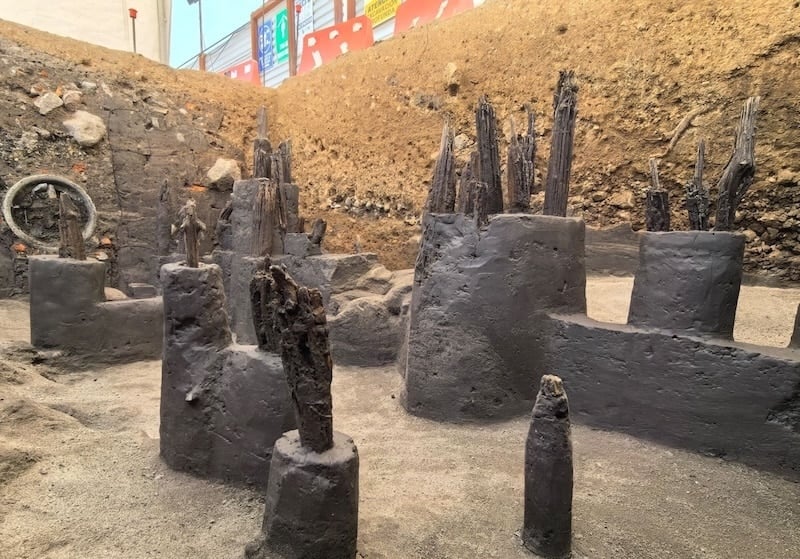

A discovery beneath Chapultepec Avenue, one of Mexico City’s busiest streets, has revealed remnants of a dock and canal from pre-Hispanic times. These structures once formed part of a shoreline near the base of Chapultepec Hill, according to experts from the National Institute of Anthropology and History (INAH), a federal cultural agency.
The find occurred during construction work for an underpass near the Chapultepec Metro station. Led by researcher María de Lourdes López Camacho, the team uncovered sections of an ancient man-made waterway. Recently, they also identified a small dock. This dock likely served as a landing point for canoes traveling to and from the Texcoco Lake.
A well-preserved section of an ancient canal lies beside the former Secretariat of Health building. This area, in 2023, revealed traces of a residential complex from a pre-Hispanic settlement that predated the village of San Miguel Chapultepec.
An expert from the National Museum of History, Castillo de Chapultepec, explained the connection between the canal and a home from the Late Postclassic Period (1200–1521 AD) found at the former Secretariat site. The house aligns directly with the canal.
According to the researcher, a pathway likely connected the residence to this main water route. It was common for water paths to run parallel to land routes in such settlements.
#Galería | Dos metros por debajo de avenida Chapultepec, el @INAHmx descubrió los restos de un muelle y un canal navegable de la época prehispánica, en lo que fue la playa de una península ubicada al pie del Cerro del Chapulín.
Los expertos han identificado varias secciones… pic.twitter.com/PXPegHrQ5f
— Once Noticias (@OnceNoticiasTV) November 28, 2024
The director of the project described the discovery of the ancient shoreline as remarkable. Its location, in a heavily altered area since the late 19th century, adds to its significance.
The indigenous village of San Miguel Chapultepec disappeared during that time when its lands were divided, and the Secretariat of Health building was constructed. Later, nearby neighborhoods developed, and the area was drastically transformed in the 1960s with the construction of the Chapultepec Metro station.
Originally, a river flowed through this site, running along the southern side of the hill and emptying into a reservoir. Over time, the waterway underwent cultural changes. First, it became a navigable canal.
During the early colonial period, it was converted into a drain. By the mid-18th century, it evolved into the Chapultepec aqueduct, which featured 904 arches and transported water from the Chapultepec pools to the Salto del Agua fountain, according to INAH.
The excavation lead, Liliana Márquez Escoto, reported that the largest explored area of the site reveals the canal’s base and sandy shoreline. This section measures 2.5 meters wide and 4 meters long.
However, the team faced challenges due to nearby infrastructure, with water pipes from the Metro system to the south and drainage systems to the north limiting further excavation.
Managing water flow has been a key challenge for the team, which also includes archaeologists Paola González Montero and David Chávez Fernández.
Márquez Escoto explained that the area’s slope and hydrology required the use of pilings to reinforce the canal walls. The potential dock, located midway along the canal, shows evidence of a compacted surface for access and 40 wooden pilings placed crosswise.
According to studies by Dr. Aurora Montúfar López, some stakes in the canal were made from fir or oyamel wood.
Samples from the dock’s wooden structures, measuring between 40 and 137 centimeters in height and 13 to 29 centimeters in thickness, are being prepared for analysis at INAH’s Subdirectorate of Laboratories and Academic Support (SLAA).
